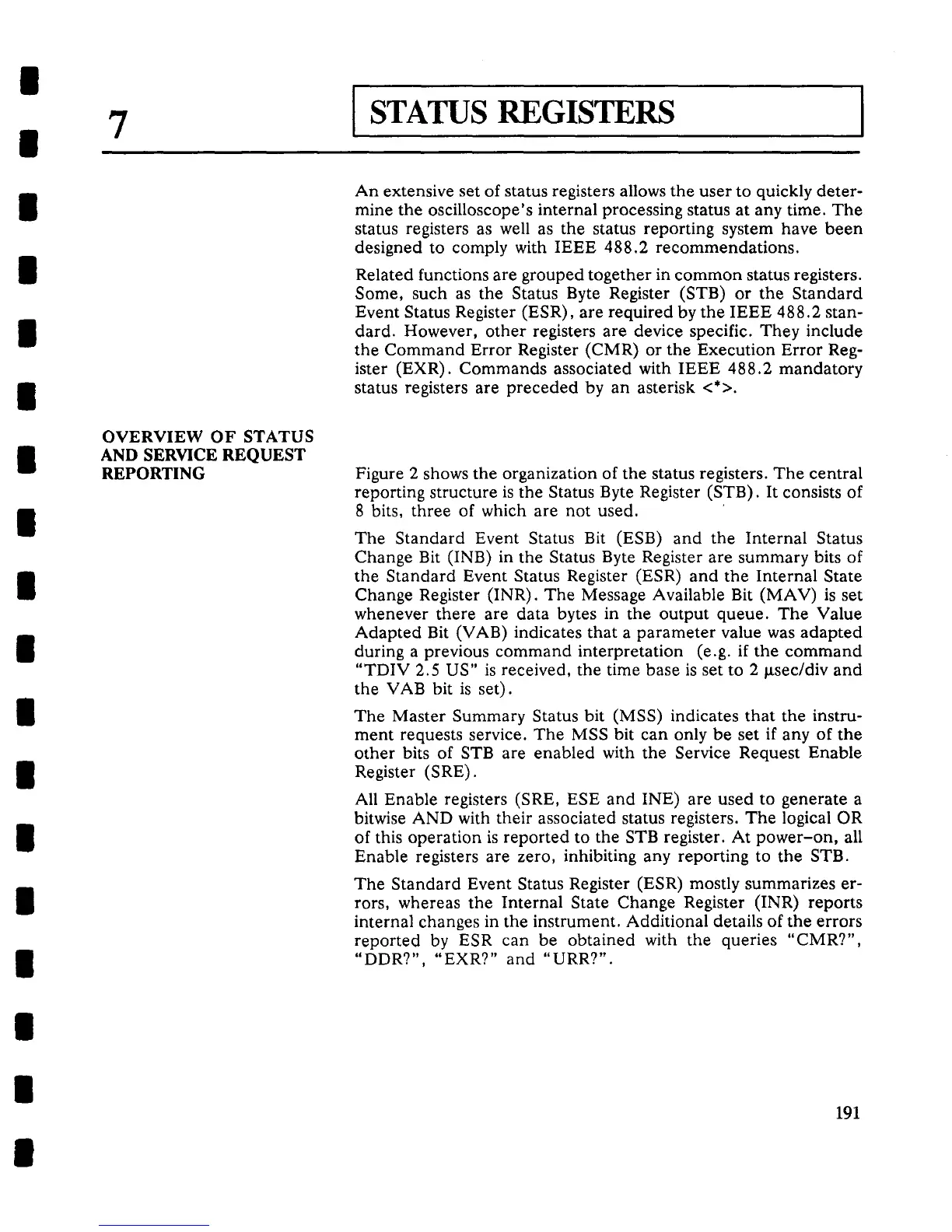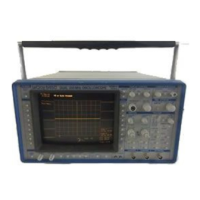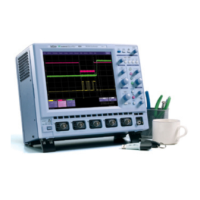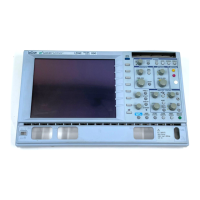7
I
STATUS REGISTERS
OVERVIEW OF STATUS
AND SERVICE REQUEST
REPORTING
An extensive set of status registers allows the user to quickly deter-
mine the oscilloscope’s internal processing status at any time. The
status registers as well as the status reporting system have been
designed to comply with IEEE 488.2 recommendations.
Related functions are grouped together in common status registers.
Some, such as the Status Byte Register (STB) or the Standard
Event Status Register (ESR), are required by the IEEE 488.2 stan-
dard. However, other registers are device specific. They include
the Command Error Register (CMR) or the Execution Error Reg-
ister (EXR). Commands associated with IEEE 488.2 mandatory
status registers are preceded by an asterisk <*>.
Figure 2 shows the organization of the status registers. The central
reporting structure is the Status Byte Register (STB). It consists
8 bits, three of which are not used.
The Standard Event Status Bit (ESB) and the Internal Status
Change Bit (INB) in the Status Byte Register are summary bits
the Standard Event Status Register (ESR) and the Internal State
Change Register (INR). The Message Available Bit (MAV) is
whenever there are data bytes in the output queue. The Value
Adapted Bit (VAB) indicates that a parameter value was adapted
during a previous command interpretation (e.g. if the command
"TDIV 2.5 US" is received, the time base is set to 2 ~sec/div and
the VAB bit is set).
The Master Summary Status bit (MSS) indicates that the instru-
ment requests service. The MSS bit can only be set if any of the
other bits of STB are enabled with the Service Request Enable
Register (SRE).
All Enable registers (SRE, ESE and INE) are used to generate
bitwise AND with their associated status registers. The logical OR
of this operation is reported to the STB register. At power-on, all
Enable registers are zero, inhibiting any reporting to the STB.
The Standard Event Status Register (ESR) mostly summarizes er-
rors, whereas the Internal State Change Register (INR) reports
internal changes in the instrument. Additional details of the errors
reported by ESR can be obtained with the queries "CMR?",
"DDR?", "EXR?" and "URR?".
191

